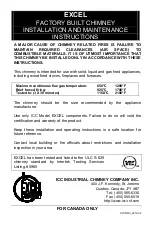
User's Guide HDSPe MADI
© RME
41
25.2 The User Interface
The visual design of the TotalMix mixer is a result of its capability to route hardware inputs and
software playback channels to any hardware output. The HDSPe MADI provides 64 input chan-
nels, 64 software playback channels, and 64 hardware output channels:
For best screen display the channels have been arranged in three rows as known from an Inline
desk, so that the row
Software Playback
equals the
Tape Return
of a real mixing desk:
•
Top row: Hardware inputs. The level shown is that of the input signal, i. e. fader independ-
ent. Via fader and routing field, any input channel can be routed and mixed to any hardware
output (bottom row).
•
Middle row: Playback channels (playback tracks of the audio software). Via fader and routing
field, any playback channel can be routed and mixed to any hardware output (third row).
•
Bottom row (third row): Hardware outputs. Here, the total level of the output can be adjusted.
This may be the level of connected loudspeakers, or the necessity to reduce the level of an
overloaded submix.
Usage in mode Submix View (Default):
simply click on the hardware output channel where
you want to have an audio signal. This channel turns brighter, means it is selected as current
submix. Now move the faders up from all sources - input and playback channels - that you want
to hear at the submix output.
The following chapters explain step by step all functions of the user interface.
Summary of Contents for HDSPe MADI
Page 5: ...User s Guide HDSPe MADI RME 5 User s Guide HDSPe MADI General ...
Page 33: ...User s Guide HDSPe MADI RME 33 User s Guide HDSPe MADI Connections and TotalMix ...
Page 40: ...40 User s Guide HDSPe MADI RME ...
Page 62: ...62 User s Guide HDSPe MADI RME ...
Page 63: ...User s Guide HDSPe MADI RME 63 User s Guide HDSPe MADI Technical Reference ...
















































